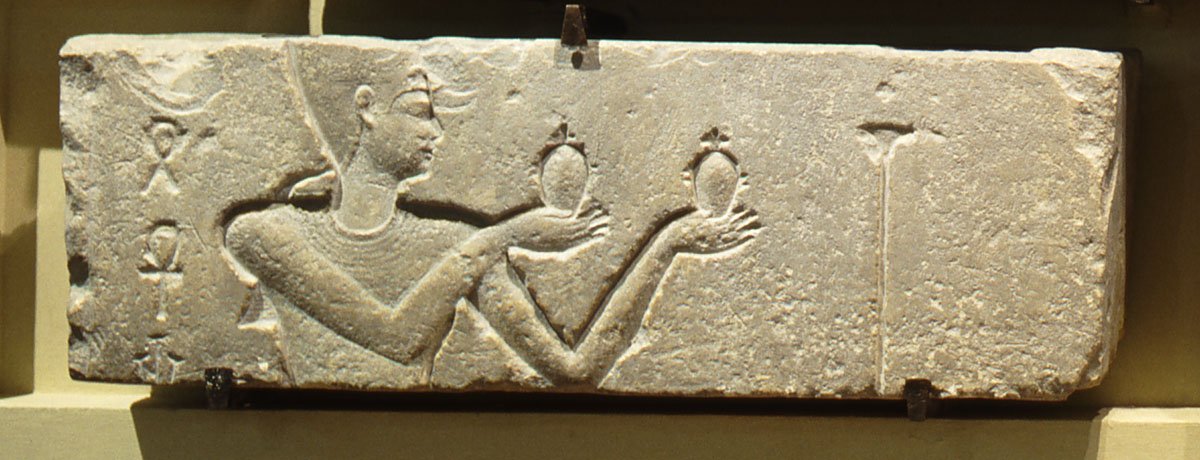
Relief Fragment from the Temple of Sharuna
Egyptian Art
| Place of production | Egypt |
|---|---|
| Date | 2100–1900 BC |
| Object type | tomb equipment |
| Medium, technique | Wood, traces of gesso and painting |
| Dimensions | 13.8 × 3.1 × 3 cm |
| Inventory number | 57.7-E |
| Collection | Egyptian Art |
| On view | This artwork is not on display |
This painted wooden servant statuette, which depicts a female worker leaning forward, is a piece of fine craftsmanship. Servant statuettes are considered a type of funerary equipment characteristic of elite burials from the late Old Kingdom to the early Middle Kingdom. These small-scale artefacts represented a range of labour activities in three-dimensional art, and the wide variety of goods they produced ensured a continued supply for the tomb owner in the afterlife through the power of magical representation.
The female figure is portrayed standing with slightly bent knees; her arms, once attached to the torso with dowels, are now missing. Although the gesso coating has almost completely gone with much of the original painting, she can still be claimed to have been wearing a white head cloth and a white sheath dress that reaches below the knees and held in place by straps over the shoulders. The contours of her white-painted eyes are outlined in black, and the toes on her left foot are also marked with faint black painting. Despite the lack of arms, the statuette almost certainly depicts a woman working in a bakery or brewery. The two activities were technologically closely related in ancient Egypt, bread dough having been an essential component of beer brewing. The stages of the procedure were often depicted both in pictorial representations and within wooden models of bakeries and breweries. In light of the parallels they provide, it can be suggested that the female figure was originally leaning over either a saddle quern set in a waist-high casing or a large vat used for fermentation in beer production.
This record is subject to revision due to ongoing research.